Wondering, “do dogs need a friend?” The truth is, many dogs benefit from the companionship of a fellow canine. Unlike the usual buzz you may hear, not all dogs require a pal, but certain signs of loneliness – like destructive behavior or changes in appetite – can indicate that your dog might be happier with a companion. In this article, we’ll explore your dog’s need for companionship, how to choose the right friend for them, and alternatives if another dog isn’t a feasible option.
Connect with your local dog lovers community at Furlyfe.com
Key Takeaways
-
Dogs are social animals and may need companionship if they show signs of loneliness or behavioral changes, but not all dogs require another canine friend.
-
Choosing the right second dog involves considering breed compatibility, age, sex, following the temperament of your current pet, and deciding between a puppy or rescue dog.
-
Properly introducing a new dog to your home includes setting boundaries and routines and using neutral territory for first meetings to foster friendship between the dogs.
Recognizing Your Dog’s Need for Companionship
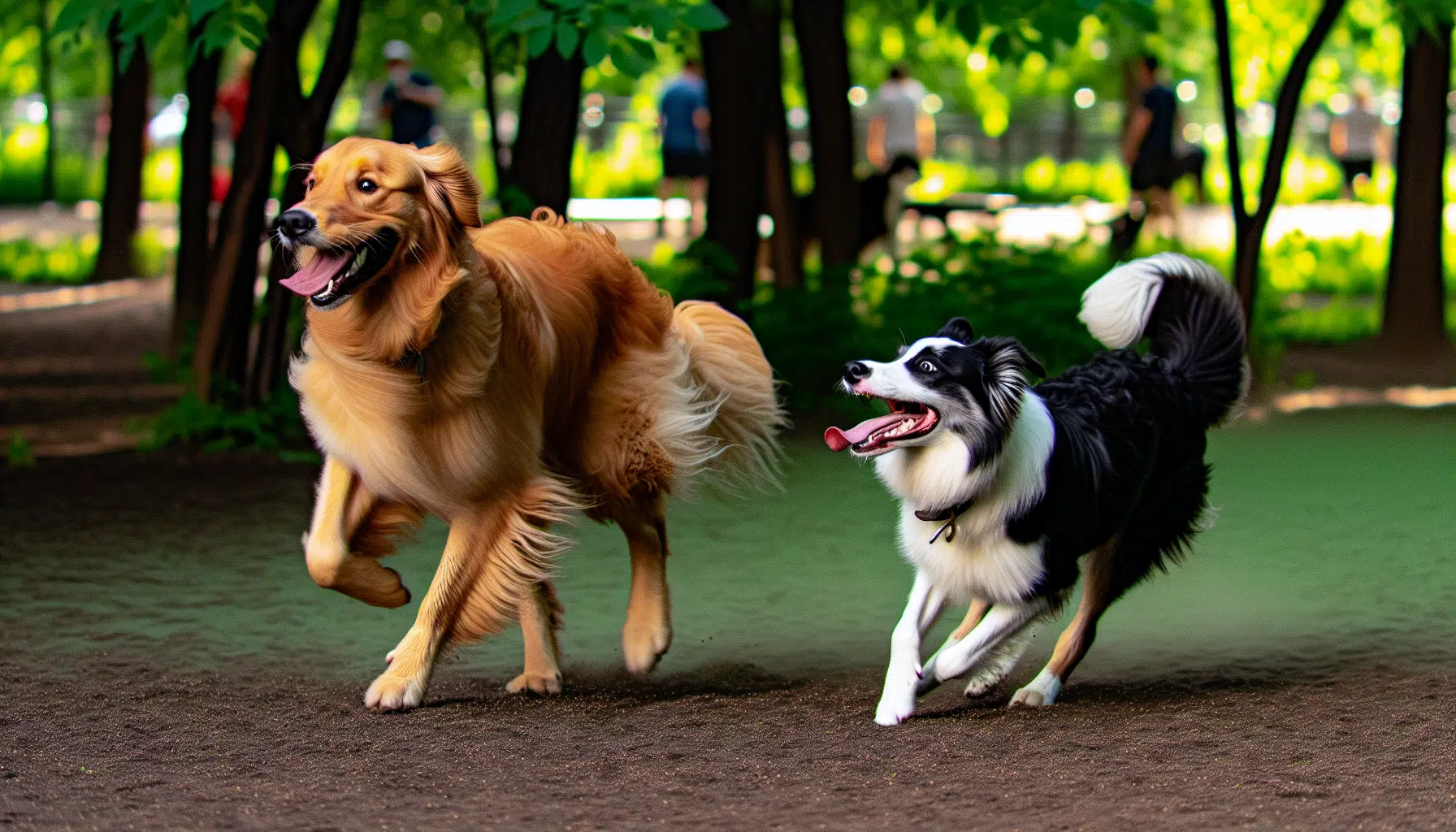
Think of your furry friend as a social butterfly. While they might love curling up on your lap for some quality cuddle time, they also need to interact with other dogs. Just as humans crave companionship, dogs are social animals that thrive in the company of others. This need for social interaction isn’t limited to just adult dogs; puppies and even your adult dog share this need too. So, if you’re noticing signs like your dog becoming one of those aggressive dogs, changing their eating habits, or seeming extra clingy, it might be time to consider getting them a canine companion.
However, it’s important to remember that not all dogs are the same. While many dogs struggle with loneliness, some dogs might be perfectly content as the only dog in the house. This is where understanding your dog’s personality and watching their reactions to other dogs at places like the local dog park can be helpful. Recognizing your dog’s need for companionship is the first step in deciding whether to introduce a new furry friend into your household.
To find places in your area like dog parks or beaches visit Furlyfe’s Activity Map.
Social Animals: Understanding Pack Mentality
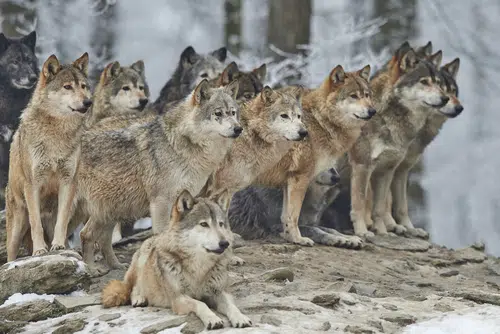
Dogs are pack animals, which means they thrive in groups. Their ancestors, wolves, live in packs, and this pack mentality has been passed down to our domestic dogs. This ingrained instinct drives their behavior and shapes their interactions with humans and other animals. So, when your dog seems to be glued to your side or is always eager for a play session at the dog park, it’s because they’re social animals that crave companionship.
Read more about the history of dogs here.
But what happens when a dog doesn’t have enough social interaction? Well, they can become pretty down, and might even start acting out. This could manifest as destructive behavior, excessive barking, or even self-harm. It’s heartbreaking to witness, and it’s a clear sign that your dog needs more social interaction. In many cases, adding a second dog to the household can provide the companionship they need.
Reading Your Dog’s Body Language
Dogs may not be able to speak our language, but they communicate loud and clear through their body language. By learning to read these signals, you can gain a better understanding of your dog’s emotional state and assess whether they’re feeling lonely.
Signs of loneliness in dogs can range from subtle to glaringly obvious. Some common signs include:
-
Excessive vocalization
-
Pacing around
-
Hiding
-
Destructive behavior
-
Changes in eating habits, such as eating less or seeming less interested in food
By being attuned to these signs and understanding what your dog is trying to tell you, you can take the necessary steps to alleviate their loneliness, such as introducing a companion dog into your home.
Choosing the Right Canine Companion
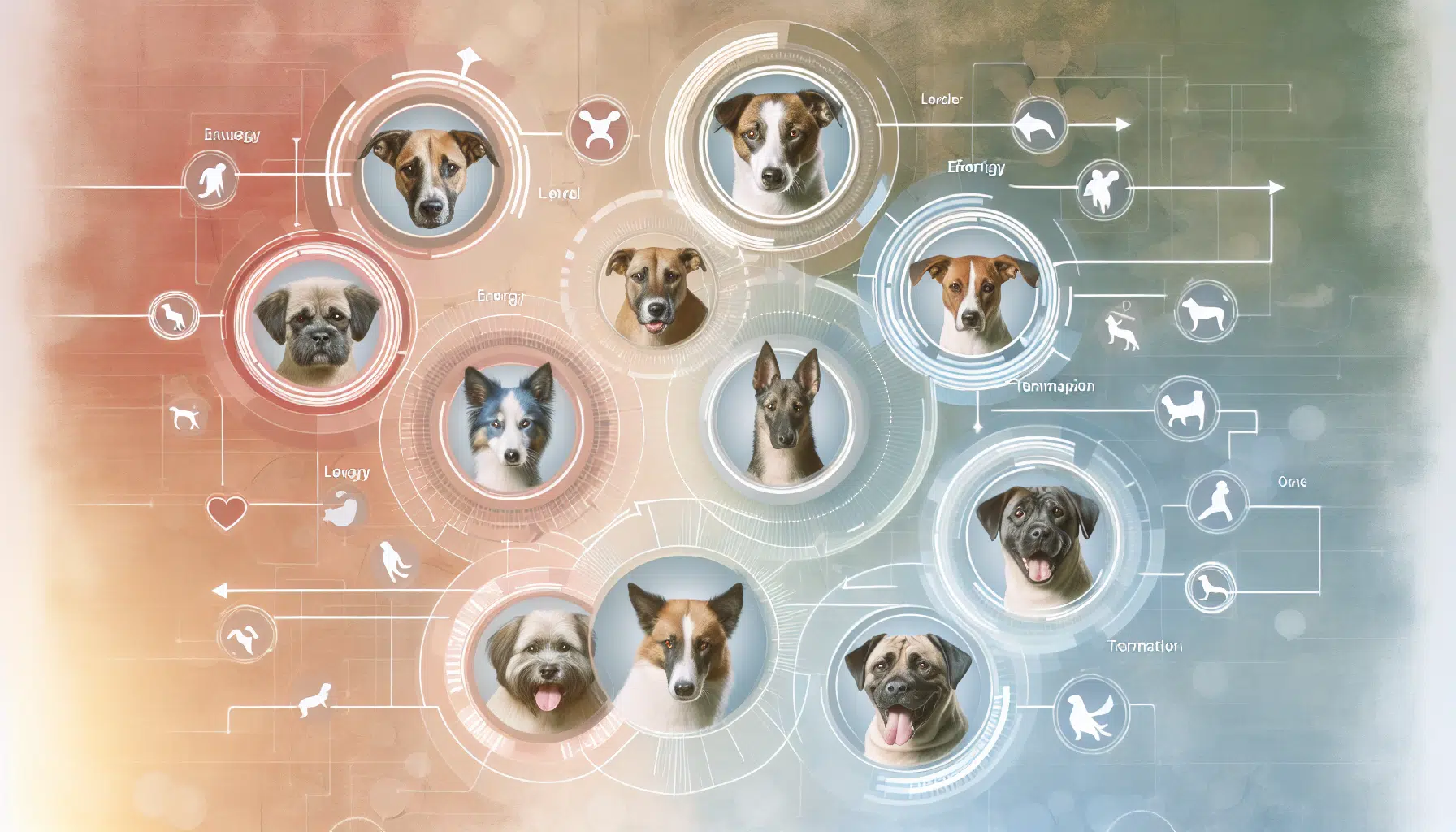
So, you’ve decided to get a second dog to keep your current pup company – that’s great! But before you rush out to the nearest pet store or animal shelter, there are a few things you need to consider. Just like humans, dogs have their own unique personality traits and preferences. As such, not every dog will be a good match for your current fur baby.
Choosing the right canine companion involves considering factors such as:
-
Breed
-
Age
-
Sex
-
Temperament
For example, dogs of the same breed usually recognize each other and feel a natural connection, making it easier for them to get along. Similarly, age matters when introducing a new dog. Older dogs might struggle with a puppy’s high energy, while younger dogs may not have the patience for an older dog’s slower pace. Matching the temperament and energy levels of both dogs can also go a long way in ensuring a smooth introduction.
Breed Considerations
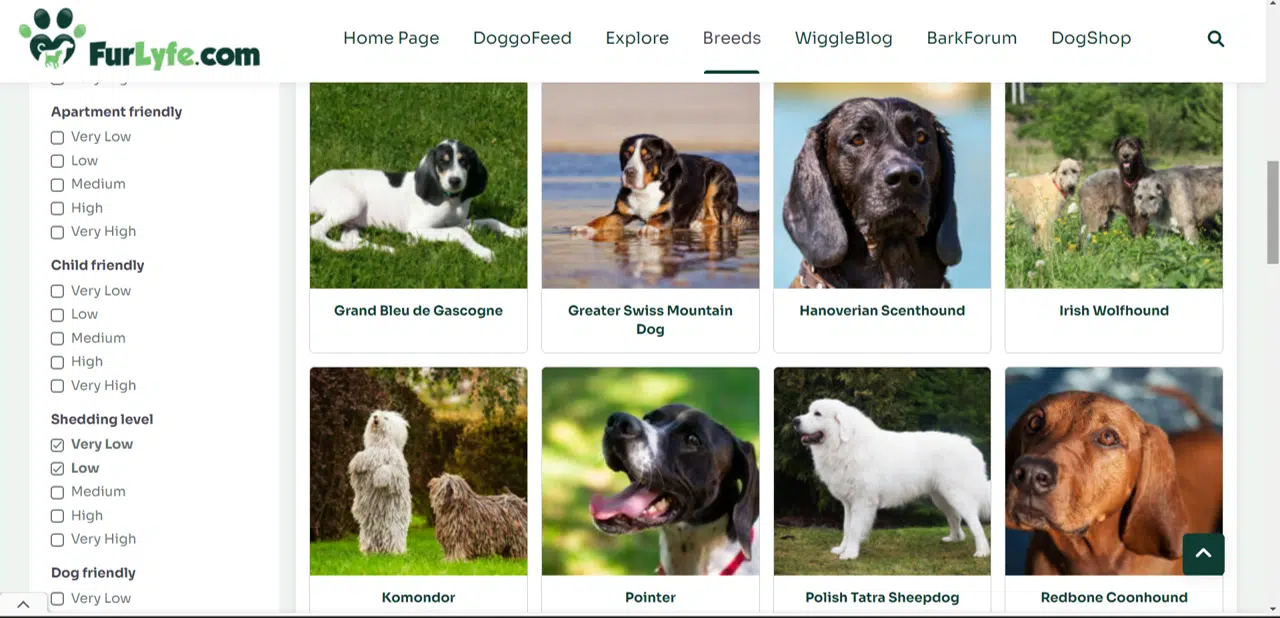
Different breeds have different temperaments and energy levels. For example, a Border Collie is known for its high energy and intelligence, making it a great companion for other active breeds. On the other hand, a Bulldog, known for its laid-back nature, might be a better match for similarly easygoing breeds.
However, it’s not just about breed. Each dog is an individual, and there can be a lot of variation even within the same breed. That’s why it’s important to consider your current dog’s personality and how they react around other dogs. This will help you gauge what kind of breed – and particular dog – would be a good match for them.
Visit Furlyfe’s breed page to filter 21 different characteristics to find the perfect mate.
Rescue Dog vs. Puppy: Weighing the Pros and Cons
When it comes to bringing a new dog into your home, you also have to decide between adopting a rescue dog or getting a puppy. Each option has its own pros and cons, and the best choice depends on your specific situation.
Puppies, while adorable, require a lot of time and effort for training and socialization. Rescue dogs, on the other hand, often come with an established temperament but can have behavioral issues due to past experiences, but it’s never too late to socialize an adult dog. It’s important to weigh these factors against your current dog’s temperament, your lifestyle, and the amount of time you can dedicate to your new pet.
Preparing Your Home for a Second Dog
Once you’ve made the decision to get a new dog and have chosen the perfect companion for your current pup, it’s time to prepare your home. Just as you would prepare your home for a new baby, bringing a new dog into the house requires some adjustments.
Creating a welcoming environment for your new pet will not only make the transition easier for them but also help prevent conflicts between the two dogs. By setting boundaries, introducing new routines, and ensuring that both dogs have their own space, you can create a harmonious multi-dog household.
Establishing Boundaries
Establishing boundaries is crucial when bringing a new dog into your home. By creating separate spaces for each dog, you can prevent territorial disputes and ensure that both dogs feel secure and respected.
For crate training two dogs or puppies you can use a ‘crate and rotate’ method or use gates to create separate areas for each dog. Each dog should have their own bed, toys, and water bowls. This not only gives them a sense of ownership but also reduces the chances of fights over resources.
Introducing New Routines
Just as important as setting boundaries is establishing new routines. Routines give dogs a sense of structure and predictability, which can be comforting in a time of change. This is especially true when introducing a new dog into the home.
Try to keep feeding times, walks, and playtimes consistent for both dogs. This will not only help them adjust to each other’s presence but also establish a sense of order and harmony in the household. Remember, patience and consistency are key in helping your dogs adapt to their new shared life.
The Introduction Process: Helping Dogs Become Friends

Now comes the exciting part – introducing your current dog to their new friend! This process should be carried out carefully and gradually to ensure a positive first interaction. It’s important to remember that every dog is different, so it’s okay if things don’t go perfectly the first time.
To help your dogs bond, introduce fun shared activities such as playing games or going on walks together. This will not only help them to build trust but also allow them to associate each other’s presence with positive experiences.
Neutral Territory: First Meetings
The first meeting between your current dog and their new friend should be carried out in a neutral location. This could be a park, a quiet street, or any place where neither dog has established their territory. This helps minimize territorial behavior and fosters a non-threatening environment for the dogs to meet.
The initial meeting should be short and positive. Here are some tips to follow:
-
Allow the dogs to sniff around and get acquainted.
-
Reward them for calm behavior.
-
If possible, allow them to interact off-leash in a controlled environment. Remember, it’s okay if the first meeting doesn’t go perfectly – patience is key here.
Building Trust Through Play and Activities
Building trust between two dogs takes time and patience. One of the best ways to foster trust and friendship is through play and shared activities. These activities should be fun for both dogs and should not cause any stress or fear.
Whether it’s going for a walk together or engaging in a game of tug-of-war, shared activities allow the dogs to form positive associations with each other. Over time, these positive experiences will help them build a strong bond and mutual respect.
Alternatives to Getting Another Dog
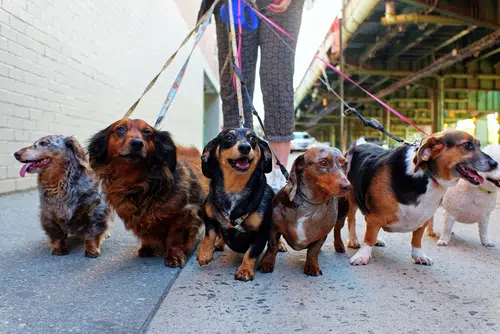
If getting another dog isn’t an option for you, don’t worry! There are several alternatives to ensure your dog gets the social interaction they need. Some options include:
-
Doggy daycares
-
Hiring a dog walker
-
Enrolling your dog in group training classes
-
Organizing playdates with other dogs in your neighborhood
These options can provide your canine friend with the companionship they crave.
Remember, the goal is to ensure that your dog’s social needs are met. Whether this is through getting another dog, an other dog, or opting for one of the alternatives, what matters most is that your furry friend is happy and socially fulfilled.
Doggy Daycare and Playgroups
Doggy daycare and playgroups are a fantastic way for your dog to socialize and make friends. These places provide a safe environment for dogs to run around, play, and interact with other dogs under the supervision of trained staff.
In addition to socializing, doggy daycare and playgroups also provide mental stimulation and physical exercise, which can help prevent boredom and destructive behaviors at home. Just like children benefit from going to school and interacting with their peers, dogs can also benefit greatly from these social experiences.
To find local playgroups or dog activities visit Furlyfe’s event page.
Hiring a Dog Walker or Pet Sitter
If your dog is home alone for long periods, hiring a dog walker or pet sitter can be a great solution. These professionals can provide companionship for your dog when you’re not home, attend to their needs, and even provide some much-needed exercise.
When hiring a dog walker or pet sitter, be sure to choose someone who is responsible and experienced with dogs. This ensures that your dog is in good hands and can enjoy their time even when you’re not around.
Summary
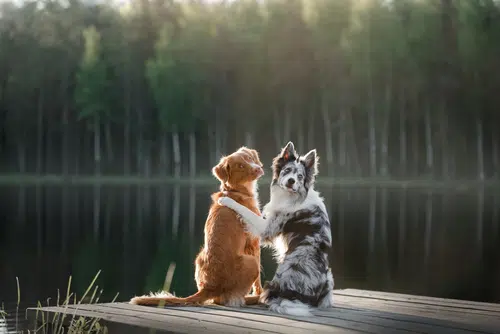
Navigating the world of dog companionship can be a complex journey, but with the right knowledge and approach, it can be a rewarding experience for both you and your furry friend. Whether you’re recognizing your dog’s need for companionship, choosing the right new friend, preparing your home, or navigating the introduction process, every step brings you closer to creating a happy multi-dog household.
Remember, every dog is different, and what works for one may not work for another. The key is to be patient, flexible, and attentive to your dog’s needs. After all, our furry friends bring so much joy and companionship into our lives, it’s only fair we do our best to return the favor.
Frequently Asked Questions
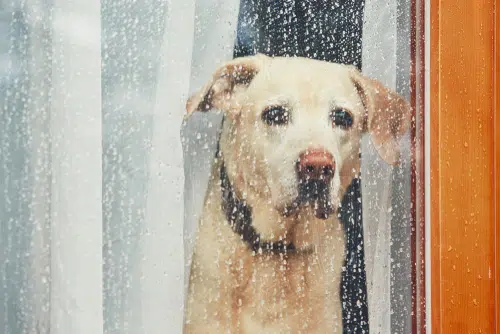
Do dogs get lonely being the only dog?
Yes, dogs can feel lonely when they are the only dog because they are pack animals and crave social interaction. It’s important to consider their need for companionship.
Are dogs happier with a second dog?
Having a second dog can help your first dog feel more secure and alleviate loneliness, especially if they have separation anxiety. So, it’s likely that getting another dog will make your dog happier.
How do I choose the right breed for my second dog?
Consider the temperament and energy levels of the breed to ensure it matches well with your current dog’s traits and preferences when choosing a breed for your second dog.
What are the pros and cons of adopting a rescue dog versus getting a puppy?
Adopting a rescue dog means dealing with past behavioral issues, but they have established temperaments. On the other hand, puppies require a lot of time and effort for training and socialization. Consider your lifestyle and the time you can dedicate to your new pet before making a decision.
How do I prepare my home for a second dog?
To prepare your home for a second dog, set boundaries, introduce new routines, and make sure each dog has their own space. This will create a harmonious multi-dog household.









Get involved!
Comments